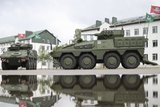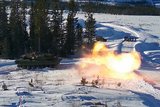A US army research centre has been working on expanding training to improve quick-reaction intelligence capabilities, according to a US Army release on 27 January.
The research centre is the Communications-Electronics Research, Development and Engineering Centre (CERDEC), which has expanded the training of soldiers on the Vigilant Pursuit multi-intelligence system. This system is designed to reduce the time it takes to properly identify and prosecute high-value targets.
Vigilant Pursuit combines human intelligence (HUMINT) and signals intelligence (SIGINT) capabilities to provide soldiers with information necessary to identify persons of interest during missions. It uses cross-cueing and tipping to enable soldiers to make decisions that require time-sensitive responses.
Vigilant Pursuit operations include HUMINT and SIGINT collectors, analysts, linguists and maintainers.
For training purposes, these specialties are broken into two broader categories- operators and maintainers. Training for both maintainers and operators has expanded since training on Vigilant Pursuit's new equipment began in February 2012. Now, maintainers receive 15 days of training instead of eight. From the beginning, SIGINT and HUMINT operators were trained side by side to learn more about the information the other is seeking.
CERDEC's Intelligence and Information Warfare Directorate (I2WD) will continue to enhance and update training on Vigilant Pursuit by adding additional elements such as using role players capable of speaking other languages to expand linguists training. Courtney Bennett, CERDEC I2WD SIGINT/Quick Reaction Capability Branch said that the team is also looking to reduce the student to instructor ration to ensure each soldier received sufficient hands-on training.
Additional training will include expanded cross training, which has been very beneficial for the multi-function teams and improves with every training iteration.
























